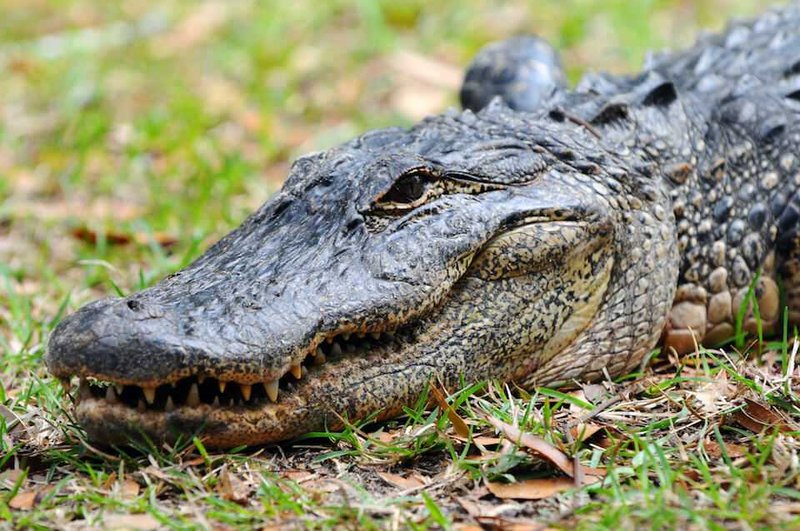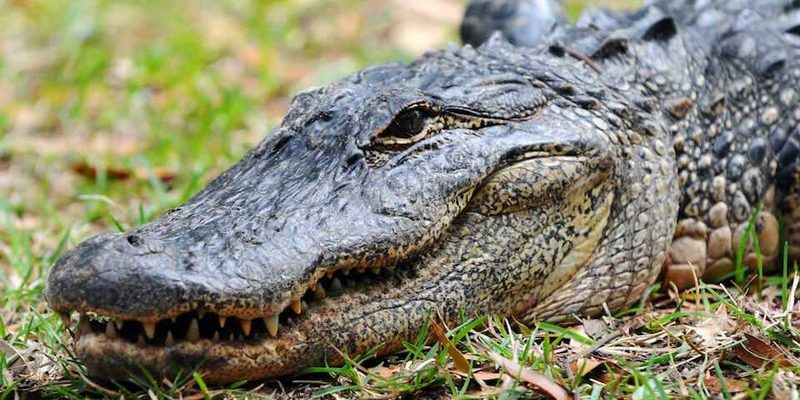
Let’s dig into the details. Think of the American alligator as a master of survival, equipped with an impressive toolbox of adaptations. From their powerful jaws to their keen sense of smell, each feature plays a crucial role in their daily life. By the end of this article, you’ll not only appreciate these creatures but also understand how their unique traits keep them at the top of the food chain.
Powerful Jaws and Teeth
One of the alligator’s most striking features is its powerful jaws. When you think of an alligator, you probably picture that impressive set of teeth, right? Honestly, these jaws can exert about 2,000 pounds of pressure per square inch, which is enough to crush bone!
The secret to this strength lies in the structure of their jaws. The muscles are incredibly strong, and the design allows for maximum biting force. Additionally, alligators have up to 80 sharp teeth, which continuously replace themselves throughout their lives. Unlike humans, who have a set number of teeth, alligators get new ones as needed. It’s like being gifted a new set of tools every time one breaks!
This adaptation isn’t just for show. Alligators use their powerful bites to catch prey, which includes fish, birds, and even larger mammals. This strength makes them formidable hunters, ensuring they get enough food in their ecosystems.
Camouflage and Stealth
When it comes to blending in, alligators are true experts. Their dark, scaly skin acts like a natural camouflage, helping them hide among water plants and mud. Here’s the thing: an alligator can lie completely still in the water, with just its eyes and nostrils above the surface, making it almost invisible to both prey and predators alike.
This stealthy approach isn’t just for hunting; it also helps them avoid threats. In the wild, alligators face dangers from larger animals or human activities. By staying hidden, they can protect themselves while waiting for the right moment to strike. You might be wondering how effective this is—well, many animals, including deer and birds, have fallen victim to an alligator’s stealthy tactics.
Furthermore, their ability to control their buoyancy allows them to stay submerged for long periods. Alligators can hold their breath for up to two hours, making their approach to prey almost undetectable. It’s all part of the survival game!
Temperature Regulation
Alligators are cold-blooded reptiles, meaning they rely on their environment to regulate their body temperature. This adaptation is quite useful, especially in varying climates. When it’s hot, they can bask in the sun to warm up. Conversely, when temperatures drop, they can hide in mud or water to cool down.
You might think that being cold-blooded puts alligators at a disadvantage, but they’ve mastered this art. By staying in the water during extremely hot days, they avoid overheating. They can also enter a state called “brumation” during colder months, similar to hibernation, allowing them to conserve energy until temperatures rise again.
In essence, their ability to adapt to changing temperatures ensures they remain active and ready to hunt when the conditions are right. It’s like having an energy-saving mode that works perfectly for their lifestyle!
Keen Senses
Alligators have an incredible set of senses that make them outstanding hunters. Their keen sense of smell is particularly impressive. They can detect odors from up to a mile away! This is essential for locating prey, especially in murky waters where visibility is low. Imagine trying to find your friend in a dark room—having a strong sense of smell would definitely help!
Their eyesight is equally remarkable. Alligators have a special membrane that protects their eyes while swimming, allowing them to see clearly underwater. Plus, they can see well in low light conditions, making them effective hunters during dawn and dusk when many of their prey are out.
Let’s not forget about their hearing, either. Alligators can detect sounds and vibrations in the water. This helps them pinpoint the location of potential meals when they’re approaching. With such finely tuned senses, it’s no wonder they’ve thrived for millions of years!
Resilient Immune System
Another remarkable adaptation of the American alligator is its strong immune system. These reptiles have the ability to heal quickly from wounds and infections, something not commonly seen in other animals. In fact, alligators can survive injuries that would be quite serious for other creatures.
When they get injured, their body can produce a variety of antimicrobial peptides. These help prevent infections and promote rapid healing. Imagine having a built-in first-aid kit that kicks in whenever you’re hurt—how cool would that be?
This resilience is particularly beneficial in their natural habitats, where they often face scrapes and bites during fights with other animals or while hunting. With such a tough immune system, alligators can bounce back quickly, ensuring their survival continues in the wild.
Social Behaviors and Communication
While they may seem solitary, alligators are quite social, especially during the breeding season. They communicate using a range of sounds, including hisses, growls, and even bellows, each indicating different moods or intentions. Honestly, it’s like they’ve developed their own language!
Alligators also engage in social behaviors, such as basking together and nurturing their young. Female alligators are known to be protective mothers. They build nests and guard their eggs until they hatch. Once the babies are born, they often carry them to the water in their mouths—a nurturing act that showcases their social nature.
These social skills contribute to their survival by promoting cooperation, especially when it comes to raising young and finding mates. It’s a perfect example of how complex and intelligent these creatures truly are.
The survival of the American alligator is nothing short of remarkable. With their powerful jaws, keen senses, effective camouflage, and resilient immune systems, they’ve adapted to thrive in a variety of environments for millions of years. Understanding these adaptations not only helps us appreciate this fascinating creature but also highlights the importance of conservation efforts to protect their habitats.
So next time you see an alligator in the wild—or even on a nature documentary—take a moment to think about the incredible adaptations that have made this living dinosaur a survivor. It’s a true testament to nature’s ingenuity!

